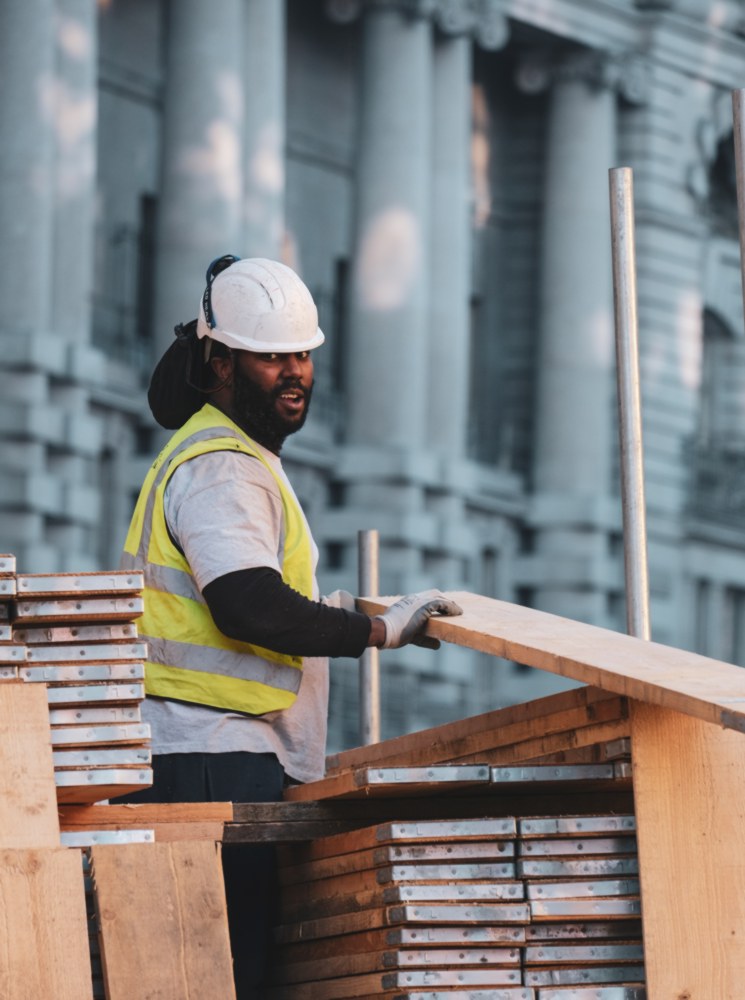How to Prevent Heat Stress at Work
 The warmest part of the year is upon us and, as many of us look forward to welcome holidays, it's business as usual for many others.
The warmest part of the year is upon us and, as many of us look forward to welcome holidays, it's business as usual for many others.
There are certain work environments that are less tolerable than others in the summer heat and construction sites rank highly as one of the least comfortable locations to toil away your summer days. Aside from the discomfort, the summer building site hosts a number of health hazards that add an extra level of peril to an already dangerous work environment.
In a working environment where falls from height, accidents involving heavy machinery and the risk of being struck by moving machines or falling objects is already high, the additional risks of working in the heat serve to exacerbate all the existing dangers, whilst providing a number of health risks in their own right.
The risks of working in the heat
The main danger of working in the heat is the risk of heat stress. Heat stress is not itself a condition, but rather a group of conditions resulting from overexposure to heat.
You needn't be working in direct sunlight to suffer from heat overexposure. There are a number of environments which can lend themselves to excessive heat. Kitchens and industrial settings where large amounts of heat are being generated can be extremely hazardous.
Heat overexposure can lead to heat stroke, which is an extremely dangerous and potentially lethal condition. With a view to preventing injury, let’s have a look at the different conditions caused by heat overexposure and the symptoms of heat stress.
Heat Stroke
Heat stroke is the name given to the condition resulting from a person’s body reaching a core temperature of 40 degrees, the temperature at which the human body loses thermal regulation abilities.
Heat stroke is considered an extremely serious medical condition. It can result in permanent injury and even death. Symptoms of heat stroke include:
High temperature
Rapid heart rate
headaches
Fainting
Confusion, delirium and slurred speech
Nausea and vomiting
Red skin
Heat stroke is considered a medical emergency. Should you suspect someone may be suffering from heat stroke move them into a cool environment and phone an ambulance immediately. Try to cool the person down by any methods available (giving them water, dowsing with liquids, cool flannels or rags, fans, etc) until help arrives.
Heat Exhaustion
Heat exhaustion is the initial phase of heat stroke, so should be addressed at the first sign in order to stop the condition from progressing. Symptoms can include:
- Chills
- Headaches
- Muscle cramps
- A fast, weak pulse
- Low blood pressure
- Intense sweating
- Fainting, dizziness and fatigue
- Nausea
If you suspect that someone may be suffering from heat exhaustion it’s imperative to get them to a cool place as quickly as possible. Give them water to drink and help them cool down with any means available.
Other conditions related to heat stress
There are a number of other conditions which fall under the heat stress umbrella, including:
- Sunburn
- Heat Rash
- Heat Cramps
These conditions can be a precursor to a more serious illness, so it is important that as soon as symptoms appear, the affected person is taken to a cool area to rest and that hydration and cooling treatments are followed.
Preventing Heat Stress In the Workplace 
Perhaps due to the fact that we spend all year looking forward to warm summer days, it can be easy to downplay the dangers of heat stress. It is very important for all personnel to be aware of the dangers of heat stress and to be educated in recognising the symptoms of heat stress in themselves and others.
It is therefore imperative that companies take a number of actions to adapt working conditions onsite to the heat, these steps include. Training workers to understand the risks of working in the heat, to recognise signs of heat stress in themselves and others and to know when and how to act to minimise the dangers of heat stress.
- Planning work around the heat. This can involve rotating workers to different parts of the site at certain times of day to avoid working in direct sunlight or planning less physically demanding tasks for the warmest part of the day.
- Providing adequate welfare facilities with cool and sheltered areas for taking breaks as well as an ample supply of drinking water.
- Programming in more abundant breaks, especially during times of maximum heat.
- Providing adequate Personal Protective Equipment that is suitable for hot weather.
Working on a construction site in the summer heat can be uncomfortable, but with good training and project planning the hazards of this type of work can be minimised.
If you have any questions regarding best practices for working on a summer construction site, speak to Drogheda today. With large depots in Drogheda and Dublin, Drogheda Hire is the leading plant and tool hire firm for Co.Louth and Dublin. Our experienced sales team can advise you on the best tools and plant for your projects as well as providing friendly advice on summer construction site solutions. Call our Drogheda depot on 0419841419 or our Dublin depot on 019108757. Our friendly team is always happy to help.
